Discover the fascinating world of moldy marvels and aged cheeses. Once dismissed as unappealing, these cheeses now captivate food lovers with their complex flavors and textures. From Stilton to fresh mozzarella, there’s a diverse cheese for every palate.
Renowned chefs like Alex James and Heston Blumenthal have put the spotlight on these exceptional cheeses. Their work proves that moldy cheeses are more than just food—they’re culinary art forms that showcase innovation and the wonders of microbiology1.
In this guide, we’ll introduce you to 7 outstanding cheeses that can transform your view of dairy. We’ll explore their unique aging processes, cultural significance, and the important role of mold and bacteria in cheese making. Join us on this flavorful journey!
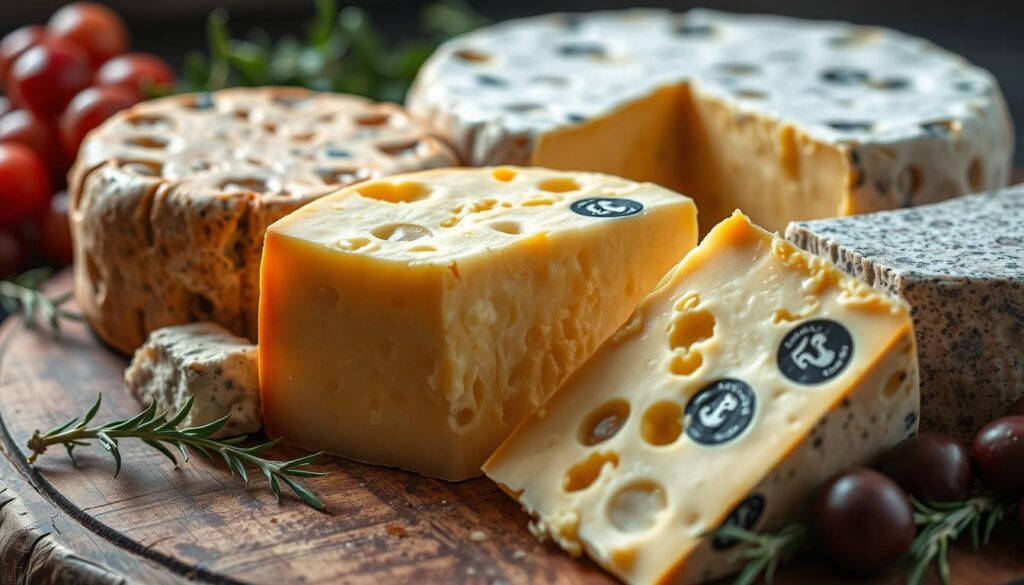
Key Takeaways: Why Moldy and Aged Cheeses Matter
- Moldy cheeses can transform your appreciation for dairy products.
- Aged cheeses offer diverse flavors thanks to unique aging techniques.
- Celebrity chefs have revitalized interest in artisan cheese making.
- Understanding cheese myths enhances both enjoyment and knowledge.
- Cheese contains microbes linked to health benefits2.
- Moldy cheeses are part of a broader cultural renaissance.
The Beauty of Aged Cheeses
Aged cheeses are a culinary treasure, steeped in tradition and full of character. The aging process is essential, allowing cheeses to develop distinctive flavors as enzymes and beneficial bacteria transform fresh curds into delectable treats.
Understanding the Cheese Aging Process
The time a cheese spends aging varies widely. Mild cheeses mature in one to three months, while semi-sharp varieties age for three to six months. Sharp and vintage cheeses develop their bold flavors after a year or more of careful aging.
Flavor Profiles of Aged Cheeses
Aged cheeses boast a spectrum of flavors, shaped by factors like temperature and humidity during maturation. For instance, Gouda acquires nutty notes, while cheddar becomes sharp and caramel-like. This diversity highlights the skill of artisan cheesemakers and delights cheese enthusiasts.
What Are Mold-Ripened Cheeses?
Mold-ripened cheeses occupy a unique place in the world of dairy. Their signature rinds, created by specific molds, enhance both texture and flavor.
Key Characteristics of Mold-Ripened Cheese
Mold-ripened cheeses are known for their distinctive rinds and creamy interiors. The interaction between mold and milk breaks down fats and proteins, resulting in complex, nuanced flavors that range from mild to pungent.
Popular Mold-Ripened Cheeses
Famous examples include Brie, Camembert, and Roquefort. Brie is mild and buttery, Camembert is earthier, and Roquefort features dramatic blue veins with a sharp, tangy bite—making it a favorite among cheese connoisseurs.
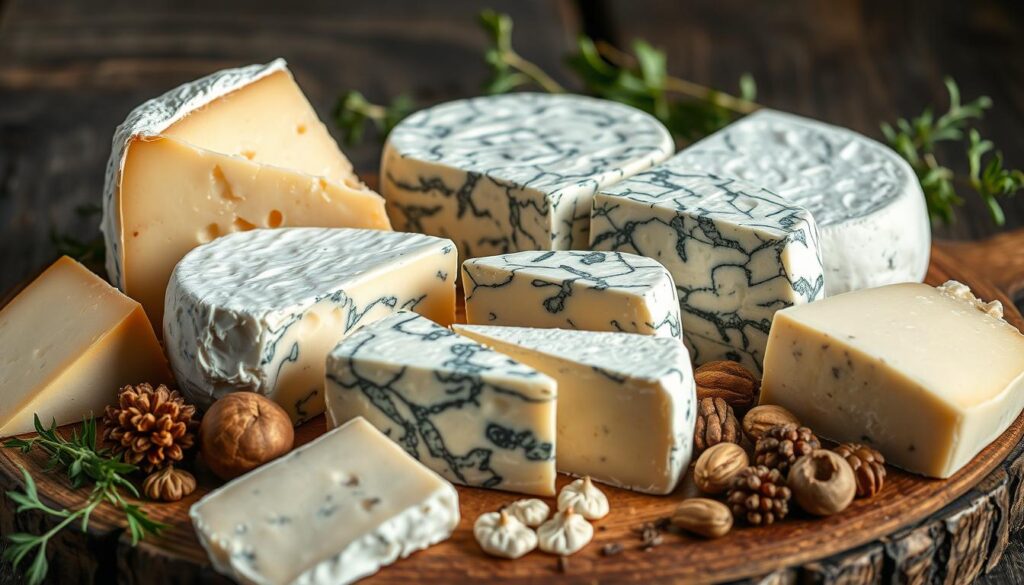
7 Moldy Marvels: Cheeses That Will Transform Your Dairy Experience
The cheese world offers a dazzling array of flavors and textures. These seven standout varieties highlight the artistry and diversity of cheese making.
Unique Flavors: The Seven Cheeses You Must Try
- Roquefort: An earthy, blue-veined cheese with bold character.
- Brie: Creamy and soft, melting effortlessly on the palate.
- Gorgonzola: A pungent blue cheese with a crumbly texture and robust flavor.
- Camembert: Rich and earthy, similar to Brie but with a distinct intensity.
- Chevre: A tangy goat cheese beloved for its fresh, bright taste.
- Gruyère: Semi-hard with nutty, savory undertones.
- Stilton: Sweet, creamy, and finishes with a powerful blue flavor.
What Makes These Cheeses Remarkable?
These cheeses set themselves apart through unique qualities and traditions. Cheese educator Jennifer Greco, for instance, curates tastings from multiple shops in Paris, introducing participants to a dozen distinct cheeses each session3. Even cheddar, a staple in many stores, comes in many artisan variations such as Trader Joe’s Unexpected Cheddar and Kerrygold Reserve Cheddar2.
The Artisan Cheese Movement: Embracing Tradition and Innovation
The artisan cheese movement celebrates time-honored cheese-making methods while embracing creativity. By supporting local cheesemakers, you contribute to a thriving market that values quality, sustainability, and flavor diversity.
Why Support Local Cheesemakers?
Local cheesemakers play a vital role in preserving regional cheese traditions. They use local ingredients, which supports sustainability and imparts unique flavors to their products, benefiting both the environment and food lovers.
Innovative Techniques in Artisan Cheese Making
Artisan cheese makers employ distinctive regional techniques, such as hand-ladling curds and cultivating traditional starter cultures. With over 1,000 small producers in the U.S. alone, new flavors and styles are constantly emerging.
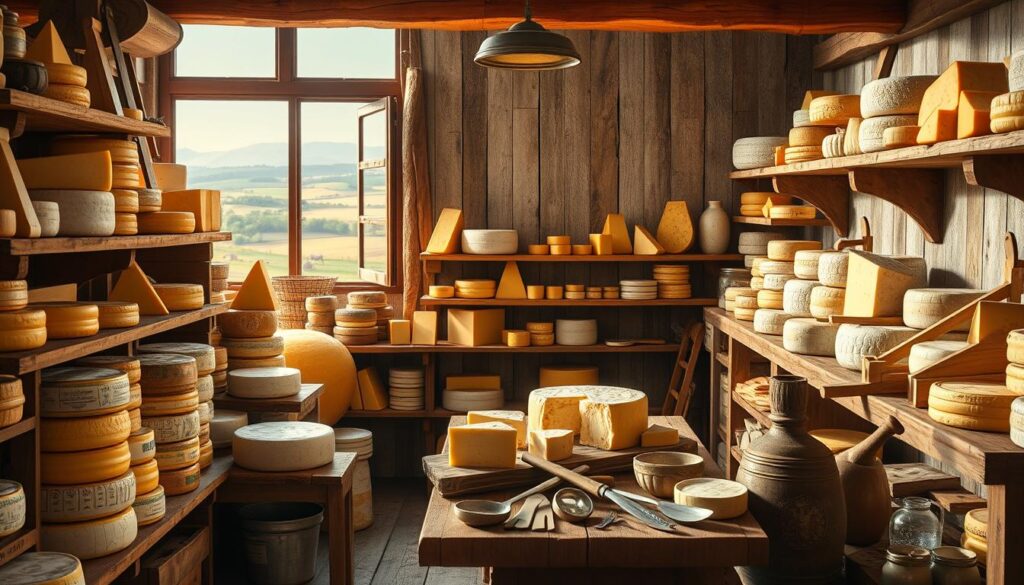
Gourmet Cheese Tasting 101: Enhance Your Tasting Experience
Gourmet cheese tasting is an adventure in flavor, especially when you master cheese pairings. The right accompaniments can elevate even the simplest cheese board.
Perfect Cheese Pairings
- Brie: Pairs beautifully with fresh berries and almonds.
- Blue Cheese: Balances with honey and walnuts.
- Cheddar: Complements cured meats and apple slices.
- Goat Cheese: Try with figs or olives for a tangy finish.
How to Assemble the Perfect Cheese Board
- Select cheeses with varying textures and flavors.
- Include crackers, nuts, and seasonal fruits.
- Arrange attractively, considering color and shape.
- Label each cheese for easy tasting and exploration.
Incorporating gourmet cheese tasting into gatherings encourages conversation and exploration, making your event truly memorable45.
Exploring Unique Cheese Flavors
Cheese is a world of unexpected tastes, shaped by origin, ingredients, and technique. Embark on a flavor adventure by seeking out cheeses made by local artisans and exploring specialty shops.
Tips for Discovering New Cheese Flavors
To find unique cheese flavors, visit local markets and specialty cheese shops. Ask cheesemongers for recommendations—supporting local makers not only enriches your palate but also strengthens the artisan cheese community.
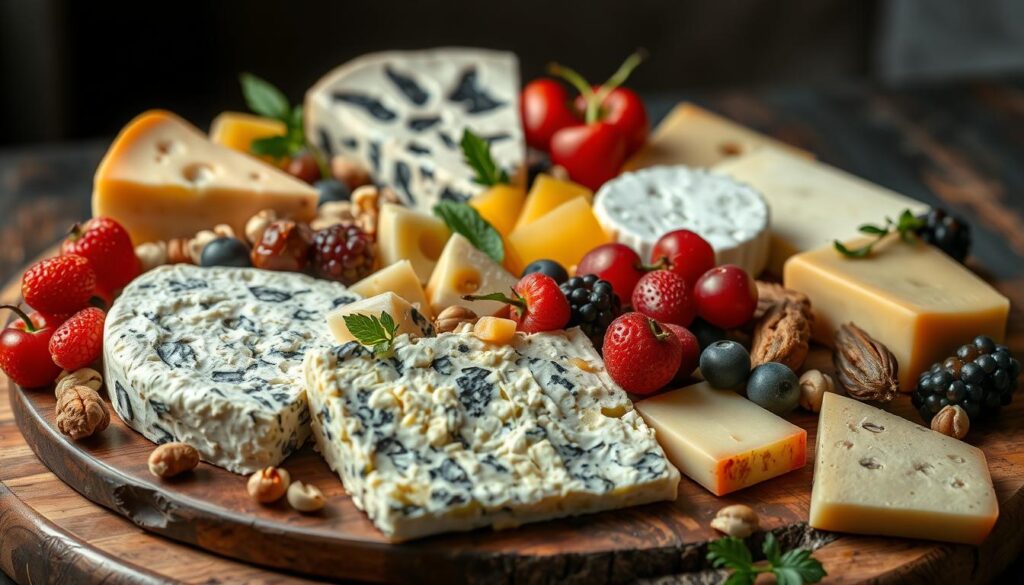
Busting Cheese Myths: Separating Fact from Fiction
There are many misconceptions about cheese—especially regarding mold. Learning the difference between beneficial and harmful mold allows you to better appreciate the range of flavors and textures cheese has to offer.
Mold, Bacteria, and Cheese Safety
Not all molds are bad. In cheeses like Brie and Roquefort, mold is essential for flavor development and preservation. Meanwhile, beneficial bacteria create taste and ensure safety, while harmful pathogens are carefully controlled during production67.
The Cultural Significance of Cheese Diversity
Cheese is more than a food—it’s a reflection of culture, history, and community. Each region’s unique cheeses tell stories of tradition and innovation, uniting people across generations and geographies.
Cheese Traditions from Different Cultures
From French Brie and Italian Parmigiano-Reggiano to Greek Feta and Spanish Manchego, cheese plays a prominent role in festivals and family gatherings around the world.
Regional Cheeses Worth Exploring
- Roquefort – Iconic French blue cheese, strong and crumbly.
- Feta – Tangy Greek cheese, often made from sheep’s milk.
- Asiago – Italian cheese with evolving flavors as it ages.
- Queso Blanco – Fresh Latin American cheese, perfect in savory dishes.
- Manchego – Nutty Spanish sheep’s milk cheese.
Tasting regional cheeses enriches your understanding of global food traditions and deepens your appreciation for the cultural stories behind every cheese89.
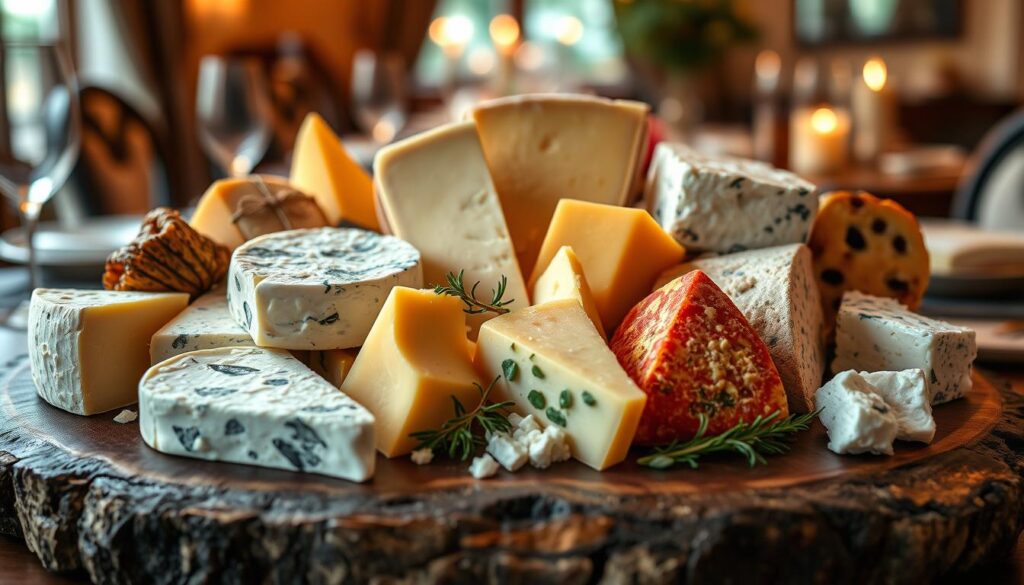
The Science Behind Cheese Making
Cheese making is a blend of art and science. The role of bacteria and other microbes is fundamental—they shape the flavor, aroma, and texture of every cheese.
How Bacteria Create Cheese Flavors
Lactic acid bacteria and other microbes are carefully selected to influence taste and texture. This microbial diversity is what gives each cheese its unique character1011.
How to Become a Cheese Connoisseur
Becoming a cheese expert starts with educating your palate. Explore a range of flavors, textures, and styles to refine your taste and knowledge.
Simple Steps to Educate Your Palate
- Sample a variety of cheeses regularly.
- Note flavor profiles and textures in a cheese journal.
- Attend tasting events or workshops to sharpen your sensory skills.
Recommended Resources for Cheese Lovers
| Resource Type | Examples |
|---|---|
| Books | “The Cheese Chronicles,” “Mastering Cheese” |
| Online Courses | Cheese 101, The Art of Cheese Pairing |
| Workshops | Local cheese-making classes, tasting events |
Utilizing these cheese lover resources will help you develop true expertise and enjoyment12.
Where to Buy Moldy Marvels and Artisan Cheeses
Ready to try something new? Find exceptional cheeses at local shops or online marketplaces. Local cheese shops offer personalized recommendations and opportunities to connect with passionate artisans.
Best Local Cheese Shops in the US
Visit iconic spots like Murray’s Cheese in New York or Cowgirl Creamery in California for rare and unique selections. Supporting local shops helps sustain artisan cheese making and community traditions.
Top Online Options for Cheese Enthusiasts
Online retailers like iGourmet and Cowgirl Creamery deliver a world of cheeses to your doorstep, including rare finds like clothbound cheddar and sustainably produced goat cheese.
Cheese Appreciation Events: Festivals and Classes
Joining cheese appreciation events is a great way to deepen your knowledge and enjoy new flavors. Tasting events and festivals unite cheese lovers and provide hands-on learning experiences.
Cheese Festivals: Celebrate and Learn
Cheese festivals are growing in popularity, with 92% of attendees reporting a greater appreciation for cheese13. With dozens of events each year, there’s always something new to taste and learn.
Cheese Tasting Classes and Workshops
Participating in cheese tasting classes is perfect for those eager to expand their palate. Over 75% of attendees report increased interest and enjoyment after these classes13.
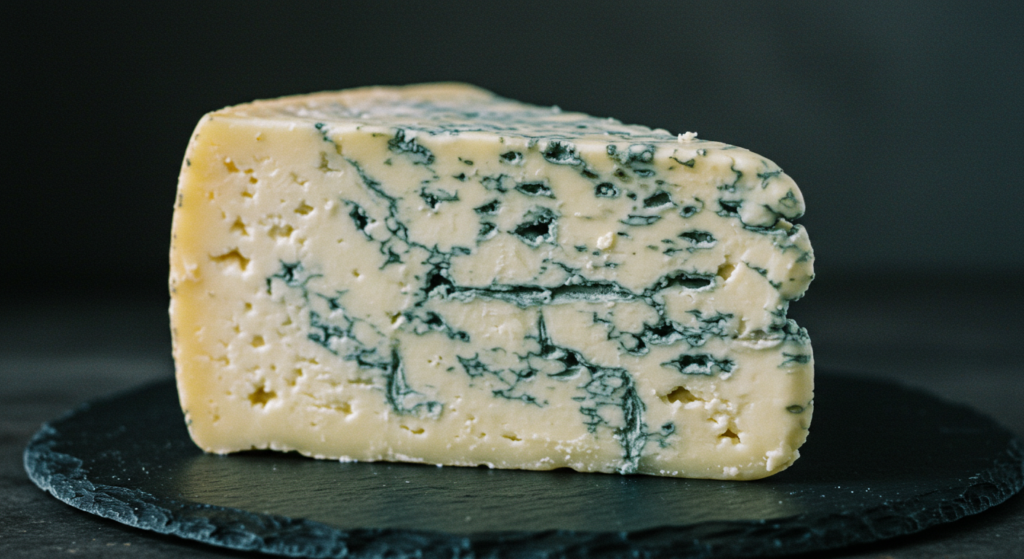
Conclusion: Embrace the World of Moldy Marvels
Exploring moldy marvels introduces you to an extraordinary world of flavors and textures, forever changing your perception of dairy. Cheese making is both a personal and communal journey, connecting us with tradition, innovation, and each other14.
With the dairy industry evolving and accessibility improving, now is the perfect time to discover new cheeses and learn about their rich histories15. Enjoy the adventure—your new favorite cheese awaits!
Frequently Asked Questions about Moldy and Aged Cheeses
What are moldy cheeses and why should I try them?
How does the aging process affect cheese flavor?
What are the benefits of trying artisan cheeses?
Can cheese be healthy even if it contains mold?
How can I enhance my cheese tasting experience?
Where can I find unique cheese flavors?
What common myths surround moldy cheeses?
How does cheese reflect cultural traditions?
What role do bacteria play in cheese production?
How can I become a cheese connoisseur?
Are there events where I can learn more about cheese?
Where can I buy gourmet cheeses?
Source Links
- These Dairy Devils Are Making Cheese From Celebrities’ Bacteria – Read More
- 7 Great Grocery Store Cheddars, Ranked by Cheese Pros – Read More
- Jennifer Greco Shares Her Love for French Cheese in Paris | The Cheese Professor – Read More
- North Bay Artisan & Farmstead Cheese – Read More
- The Complete Book Of Cheese – Bob Brown – Read More
- How the ‘Swiss Milkman’ Brought Cheese Production to Nepal – Read More
- Reinventing the Wheel: Milk, Microbes and the Fight for Real Cheese – Read More
- Cheesy Science – American Chemical Society – Read More
- The Secret History of Cheese – Wonders & Marvels – Read More
- Cheese Market News PDF – Read More
- NAS Online PDF – Read More
- USAID Cheese Resource PDF – Read More
- Bubby and Zaidy 1983 – Read More
- Our 35th Anniversary Essay Contest – Read More
- Best Face Forward – Read More